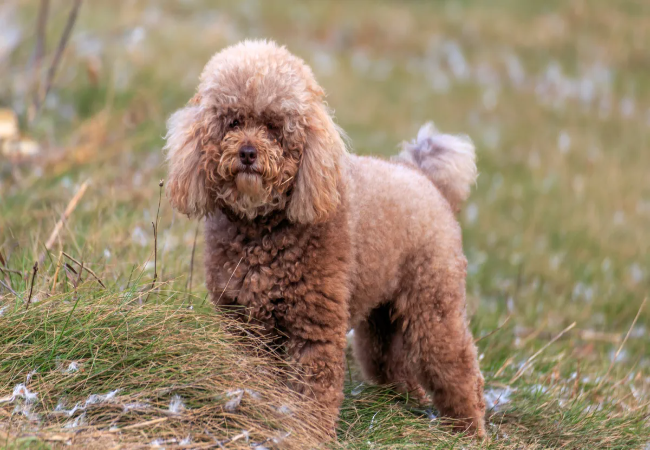Miniature Pinscher 2025: King of Toys Temperament & Care 🐶✨

In this article
Miniature Pinscher 2025: King of Toys Temperament & Care 🐶✨
By Dr. Duncan Houston BVSc
Introduction 🌟
The Miniature Pinscher—or “Min Pin”—is a bold, elegant German toy breed prized for its fearless personality, sleek coat, and signature high‑stepping gait. Though often mistaken for a miniature Doberman, this breed predates them by centuries. Our 2025 guide covers everything you need to know, from history and temperament to grooming, health screenings, training, and lifestyle fit.
1. History & Origins 📜
- Originated in Germany, the Min Pin is centuries old, developed to hunt vermin on farms and in stables.
- Likely descended from German Pinschers, Dachshunds, and Italian Greyhounds.
- Imported to the U.S. in 1919, the AKC recognized the breed in 1925; officially named “Miniature Pinscher” in 1972.
- Called the “King of Toys” for their proud stance, tenacity, and spirited demeanor.
2. Size & Appearance 🧩
- Height: 10–12.5 in; Weight: 8–10 lb—compact yet muscular.
- Coat: Short, smooth, glossy; very low-shedding; colors include red, stag red, black‑and‑tan, chocolate rust, and blue stag.
- Distinctive “hackney gait”—a high-stepping trot that sets them apart.
- Ears may be cropped or natural; tails often docked in the U.S., though trends are changing.
3. Temperament & Personality ❤️
- Fearless, alert, intelligent, and fiercely loyal—ready to take charge of the household.
- Highly energetic and playful, yet affectionate with family members.
- Can be wary or aloof with strangers; excellent watchdogs with a bold bark.
- May display stubbornness or “small dog syndrome”; early leadership and consistent training are essential.
- Strong prey drive—likely to chase small animals; socialization and supervision are key.
4. Exercise & Enrichment 🏃♂️
- Active and energetic—needs at least 45–60 min/day of walks, play sessions, or mental challenges.
- Thrives in agility, obedience, and fetch; prone to boredom and destructive behavior without stimulation.
- Prefers secure, fenced areas; known escape artists—supervision is crucial.
5. Grooming & Coat Care ✂️
- Extremely low-maintenance: weekly brushing with a soft brush is sufficient.
- Bathe as needed; keep coat and skin healthy—tolerates cold poorly, may need a sweater.
- Regular ear checks, dental brushing multiple times weekly, and nail trims are important.
6. Health & Lifespan 🩺
- Life expectancy: 12–16 years; average around 13–14 years.
- Common health issues:
- Dental disease—common due to small jaws; daily brushing essential.
- Luxating patella, Legg‑Calvé‑Perthes disease, epilepsy.
- Eye problems: PRA, juvenile cataracts; consider regular ophthalmologist checks.
- Allergies and skin sensitivities are possible; manage with veterinarian advice.
- Preventive screenings: dental exams, joint checks, eye exams; maintain a healthy weight.
7. Training & Socialization 🎓
- Requires assertive, consistent, positive reinforcement training—use treats and praise.
- Early socialization with people, dogs, and environments prevents fear and reactivity.
- Crate training helps with housebreaking and managing anxiety when alone.
- Mental exercises—puzzle toys, obedience training—help prevent boredom‐related mischief.
8. Family Fit & Lifestyle 🏡
- Best suited for active individuals, couples, or families with older children and experience with small, assertive dogs.
- Apartment-friendly if exercise needs are met; secure outdoor space is preferred.
- Not ideal for homes with small pets unless well-socialized and supervised due to prey drive.
- May suffer from separation anxiety; thrives on companionship or scheduled alone-time reintroduction.
9. Adoption & Breeder Guidance 🌟
- Consider rescue via Internet Miniature Pinscher Service (IMPS)—North America’s largest single-breed rescue.
- If purchasing, choose breeders performing health clearances on hips, eyes, heart, and patella.
- Expect price range ~$1,000–2,000; adoption fees via rescue are typically lower.
10. FAQs ❓
- Do they shed? Minimal shedding—weekly brushing keeps coat glossy.
- Are they good with kids? Yes—with training and supervision; best match older children.
- Do they bark a lot? Yes—alert barkers; training helps manage volume.
- Can they live in apartments? Yes—with daily activity and mental enrichment.
- How long do they live? Typically 12–16 years; average 13–14.
11. Ask A Vet, 🐾
- Ask A Vet: Get expert advice on dental health, joint concerns, gait issues, anxiety management, and coat care.
12. Final Thoughts ✅
The Miniature Pinscher is a lively, bold, and fiercely loyal toy breed—perfect for owners who are confident, active, and consistent. They require leadership, mental stimulation, and affection, but reward you with years of devotion and delight. For ongoing support and personalized guidance, visit AskAVet.com and download the Ask A Vet app—your partner in raising a happy, healthy Min Pin!






